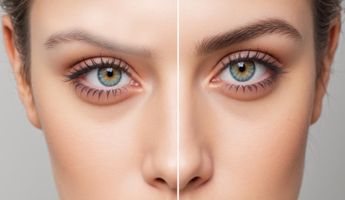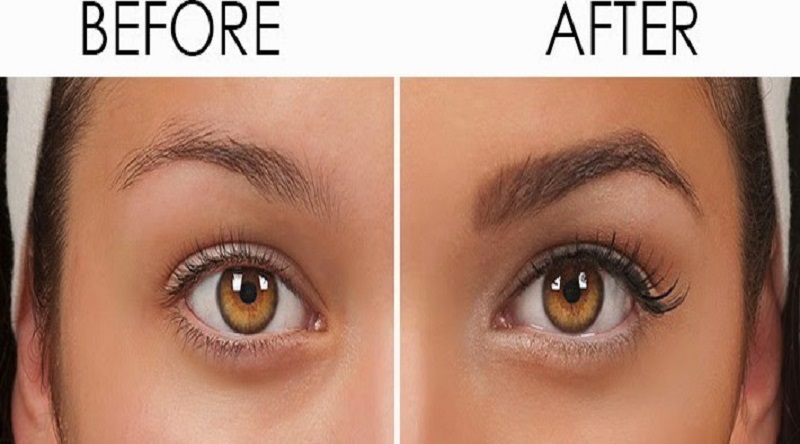Eyebrow Hair Transplant in Bulgaria
Search and Compare the Best Clinics and Doctors at the Lowest Prices for Eyebrow Hair Transplant in Bulgaria

Find the best clinics for Eyebrow Hair Transplant in Bulgaria
No clinics available
India offers the best prices Worldwide
Price: $ 136

- Home
- Bulgaria
WHY US?
At Medijump, we're making medical easy. You can search, compare, discuss, and book your medical all in one place. We open the door to the best medical providers worldwide, saving you time and energy along the way, and it's all for FREE, no hidden fees, and no price markups guaranteed. So what are you waiting for?

Free

Best Price

Widest Selection

Risk-Free
What you need to know about Eyebrow Hair Transplant in Bulgaria

Eyebrow hair transplant is a cosmetic procedure to transfer hair grafts from one part of your body to your brow area. The goal of this procedure is to make new hair grow from the transplanted grafts to produce a fuller and natural appearance. If you are not happy with the way your eyebrows look, eyebrow hair transplant can be your more permanent solution to makeup products or eyebrow micro-blading.
What does a Eyebrow Hair Transplant Procedure Involve?
This procedure is very similar to a traditional hair transplant. You are given general anesthetic, then your doctor makes small incisions at the follicle in the donor sites (usually the hairs above your ears). After that, small incisions are made at the sites of transplantation in your eyebrows and the hair follicles are placed. Any stitches will be placed in strategic positions so the scars are virtually unnoticeable.
How Long Should I Stay in Bulgaria for a Eyebrow Hair Transplant Procedure?
You may be able to leave the hospital immediately after the procedure. Plan to stay in Bulgariafor about 3 to 4 days for the initial consultation, the actual procedure, as well as a follow-up appointment to monitor your healing and removal of stitches.
What's the Recovery Time for Eyebrow Hair Transplant Procedures in Bulgaria?
The recovery time is relatively quick. You should avoid strenuous exercises for about 3 weeks, but you may be able to return to work and most of your activities in about 5 days.
What sort of Aftercare is Required for Eyebrow Hair Transplant Procedures in Bulgaria?
Your doctor will give you detailed instructions on how to care for your new eyebrows. You need to avoid touching or picking at your eyebrows. After several months, your new brow hairs will start to grow and you may trim them to your desired length. There are generally no dietary restrictions after the procedure.
What's the Success Rate of Eyebrow Hair Transplant Procedures in Bulgaria?
Eyebrow hair transplant is effective, highly successful, and safe. However, it is better to be informed about the potential side effects and risks that the procedure carries, including nerve damage, excessive bleeding, swelling; bruising, scarring, infection, and the new follicles that do not produce new hairs.
Are there Alternatives to Eyebrow Hair Transplant Procedures in Bulgaria?
Although hair transplant is currently the only procedure that offers a fuller and permanent brow hair, not everyone can undergo the procedure. If you are not an ideal candidate for the procedure, you can undergo eyebrow micro-blading or eyebrow tattoo.
What Should You Expect Before and After the Procedure
Before eyebrow hair transplant, you may not like the look of your eyebrow because you over-plucked or waxed it in the past, or you have an injury around the area. After the procedure, you should have a fuller, thicker eyebrow that looks natural and you will not need makeup to fill in your eyebrows anymore. The procedure may also boost your self-confidence.
Whilst the information presented here has been accurately sourced and verified by a medical professional for its accuracy, it is still advised to consult with your doctor before pursuing a medical treatment at one of the listed medical providers
No Time?
Tell us what you're looking for and we'll reachout to the top clinics all at once
Enquire Now

Popular Procedures in Bulgaria
Prices Start From $126

Prices Start From $347

Prices Start From $220

Prices Start From $500

Recommended Medical Centers in Bulgaria for procedures similar to Eyebrow Hair Transplant

- Interpreter services
- Translation service
- Religious facilities
- Medical records transfer
- Medical travel insurance
- Health insurance coordination
- TV in the room
- Safe in the room
- Phone in the room
- Private rooms for patients available

- Interpreter services
- Translation service
- Religious facilities
- Medical records transfer
- Medical travel insurance
- Health insurance coordination
- TV in the room
- Safe in the room
- Phone in the room
- Private rooms for patients available

- Interpreter services
- Translation service
- Religious facilities
- Medical records transfer
- Medical travel insurance
- Health insurance coordination
- TV in the room
- Safe in the room
- Phone in the room
- Private rooms for patients available

- Interpreter services
- Translation service
- Religious facilities
- Medical records transfer
- Medical travel insurance
- Health insurance coordination
- TV in the room
- Safe in the room
- Phone in the room
- Private rooms for patients available

- Interpreter services
- Translation service
- Religious facilities
- Medical records transfer
- Medical travel insurance
- Health insurance coordination
- TV in the room
- Safe in the room
- Phone in the room
- Private rooms for patients available

- Interpreter services
- Translation service
- Religious facilities
- Medical records transfer
- Medical travel insurance
- Health insurance coordination
- TV in the room
- Safe in the room
- Phone in the room
- Private rooms for patients available

- Interpreter services
- Translation service
- Religious facilities
- Medical records transfer
- Medical travel insurance
- Health insurance coordination
- TV in the room
- Safe in the room
- Phone in the room
- Private rooms for patients available

- Interpreter services
- Translation service
- Religious facilities
- Medical records transfer
- Medical travel insurance
- Health insurance coordination
- TV in the room
- Safe in the room
- Phone in the room
- Private rooms for patients available

- Interpreter services
- Translation service
- Religious facilities
- Medical records transfer
- Medical travel insurance
- Health insurance coordination
- TV in the room
- Safe in the room
- Phone in the room
- Private rooms for patients available

- Interpreter services
- Translation service
- Religious facilities
- Medical records transfer
- Medical travel insurance
- Health insurance coordination
- TV in the room
- Safe in the room
- Phone in the room
- Private rooms for patients available
Eyebrow Hair Transplant in and around Bulgaria
Introduction
Bulgaria has plenty to offer and tourists are going to be very impressed with the country’s mountainous landscapes, beautiful Black Sea beaches, fascinating history, friendly locals, lively nightlife, and affordability. Although the country’s holiday tourism is very much on the radar, it is also actually quite popular with medical tourists, due to its modern medical centers, highly trained medical professionals, state-of-the-art equipment, affordable healthcare, and mineral baths, thousands of medical tourists visit this country each year. Most of the medical tourists come for dental treatment, orthopedic surgery, elective surgery, neurosurgery, as well as health screening.
Popular Cities and Regions in Bulgaria
Bulgaria’s laid-back capital city, Sofia, is truly a must-visit. It is full of museums, Ottoman mosques, communist architecture, chic galleries, Eastern Orthodox churches, amazing restaurants, and upbeat clubs. One of the most popular landmarks in the country is the Aleksander Nevski Cathedral, which is an awe-inspiring church built between 1882 and 1912 to honor 200,000 Russian soldiers who died fighting for the independence of Bulgaria during the Russo-Turkish war. If you want to relax on beautiful beaches visit Varna, which is a major tourist destination during the summer. The second-largest, city in Bulgaria is Plovdiv and it is one of the oldest continuously inhabited cities in Europe. Tourists are attracted by the Roman Amphitheatre, Archeological Museum, and Tsar Simeon Central Garden.
Transport in Bulgaria
Most international tourists will arrive at Sofia Airport, which serves flights to most numerous major cities in Europe and the Middle East. There are several budget airlines that operate flights from this airport, including Ryanair and Wizz Air. Domestic flights are available, but they tend to be expensive. Therefore, to travel from one city to another, trains and buses are the best option. Buses and trains are punctual and affordable. However, if you are in a hurry, you should avoid trains as they can be a little slow. To travel around big cities, taxis are widely available and are really cheap. Just make sure you choose a licensed taxi to avoid being overcharged.
Visas in Bulgaria
While Bulgaria is not yet a part of the Schengen Area, it has a visa policy that is based on the Schengen system. Therefore, holders of Schengen Visa are allowed to enter the country. Additionally, citizens of 62 countries, including the US, Australia, and the UAE, can stay in the country for up to 90 days without a visa.
Weather in Bulgaria
From June to August, Bulgaria experiences summer. The weather can get a bit hot and humid, with an average temperature of 19°C to 21°C. July is the wettest month in the country. Winter, from December to February, is usually freezing. Autumn and Spring bring pleasant weather.
Additional Info
- Local Currency: The official currency is the Bulgarian Lev (BGN). 1 USD will get you approx. 1.8 BGN.
- Money & Payments: You can find ATMs in every city in the country. Credit cards are accepted in bigger restaurants and hotels. Tipping is sometimes expected.
- Local Language: Bulgarian is the official language in Bulgaria. Turkish and Roma are spoken by a minority of people. English is becoming more and more common in the country, but it is not widely spoken.
- Local Culture and Religion: Christianity dominates the population of Bulgaria, followed by Islam and Judaism.
- Public holidays: Bulgaria celebrates several historical and religious holidays, such as Orthodox Good Friday, Orthodox Easter Day, Independence Day, Culture and Literacy Day, Christmas Day, and Liberation Day.
Popular Searches
- Plastic Surgery in Thailand
- Dental Implants in Thailand
- Hair Transplant in Thailand
- Breast Augmentation Thailand
- Gastric Sleeve in Thailand
- Gender Reassignment Surgery in Thailand
- Laser Hair Removal in Bangkok
- Botox in Bangkok
- Dermatology in Bangkok
- Breast Augmentation in Bangkok
- Coolsculpting in Bangkok
- Veneers in Turkey
- Hair Transplant in Turkey
- Rhinoplasty in Turkey
- Stem Cell Therapy in Mexico
- Rhinoplasty in Mexico
- Liposuction in Mexico
- Coolsculpting in Tijuana
- Rhinoplasty in Korea
- Scar Removal in Korea
- Gastric Sleeve in Turkey
- Bone Marrow Transplant in India
- Invisalign in Malaysia
- Plastic Surgery in the Dominican Republic
- Tummy Tuck in the Dominican Republic
- Plastic and Cosmetic Surgery in Poland
- Rhinoplasty in Poland
- Hair Implant in Poland
- Dental Implants in Poland
- IVF in Turkey